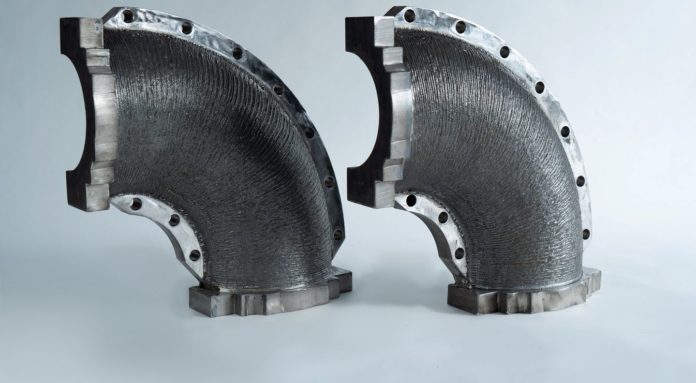Clamps are used to create secure points of attachment between various components to ensure solid connections and proper function in a given environment. Those versatile tools can be used for many applications but in the Chemical and Oil & Gas industries especially, the accuracy in the way they are made can help prevent incidents and increase the run time of an installation before maintenance is required.
Reality is, the current lead time of pipeline repair can take up to 3 weeks with a potential lost value of several 100k to 1M EUR per day. So far, operators rely on CNC milling, specialized manual labour, or a combination of both to repair these components. Each of these methods brings its share of disadvantages in terms of material waste (on average >80% of the original material) and scarcity of workforce, all of them which can be addressed by Wire Arc AM.
In an exclusive feature of 3D ADEPT Mag that discusses “the disguised complexities of Wire-Arc Additive Manufacturing”, we saw that this manufacturing process best serves the production needs of large parts, which is the case here.
To ensure safety and time-efficiency, MX3D has 3D printed an industrial pipeline clamp. The Robotic Wire Arc Additive Manufacturing (WAAM) company has worked on this project with Team Industries and TiaT, two companies that specialize in the maintenance, testing and (emergency) repair of complex industrial pipe systems. The BWI (Belgium Welding Institute) handled the material testing and Lloyd’s Register brings its expertise in the certification process.
A press release explains that BWI tested the materials and confirmed the printed material complied with key TEAM Industries requirements for this material. The MX3D M1 Metal AM System, facility and procedures were qualified by Lloyds Register. TiaT performed non-destructive testing, such as Ultrasonic Testing (UT), Penetrant Testing (PT), Radiographic Testing (RT), showing no relevant defects. TEAM Industries has performed a pressure test, which ran until the maximum pressure of the test installation (i.e. > 60 Bar) without any failure.
The base and printing material used was ASME IIA SA-516-70, a type of steel often used in the Chemical and Oil & Gas industries. The requirements for the mechanical properties of this material were dictated by its most common use case: pressure vessels working at medium to low temperature. The destructive tests were performed following ASTM A370. The destructive testing results proved that the printed material, even in its least favourable direction, has mechanical properties similar or better than the base material, hence fitting the ASME requirements, one can read.
The project introduces Hybrid WAAM, a new approach that is uniquely positioned to address post-processing and precision issues often seen in AM-dedicated production.
Via a hybrid manufacturing approach, the project team leveraged 3D printing only for the most complex geometrical parts of the clamp, while using traditional manufacturing for the simpler parts, saving precious time.
Remember, you can post job opportunities in the AM Industry on 3D ADEPT Media free of charge or look for a job via our job board. Make sure to follow us on our social networks and subscribe to our weekly newsletter: Facebook, Twitter, LinkedIn & Instagram ! If you want to be featured in the next issue of our digital magazine or if you hear a story that needs to be heard, make sure you send it to contact@3dadept.com






